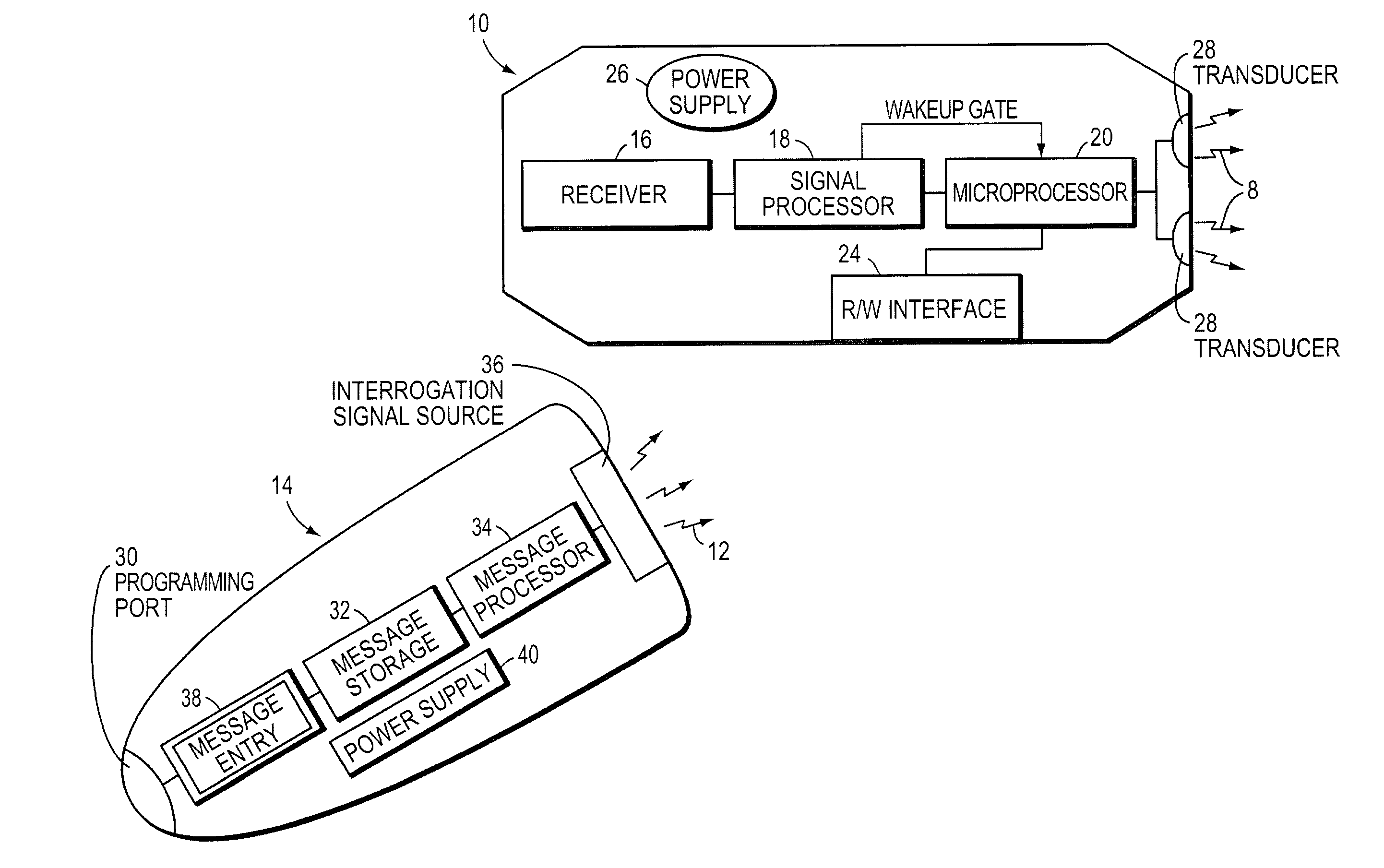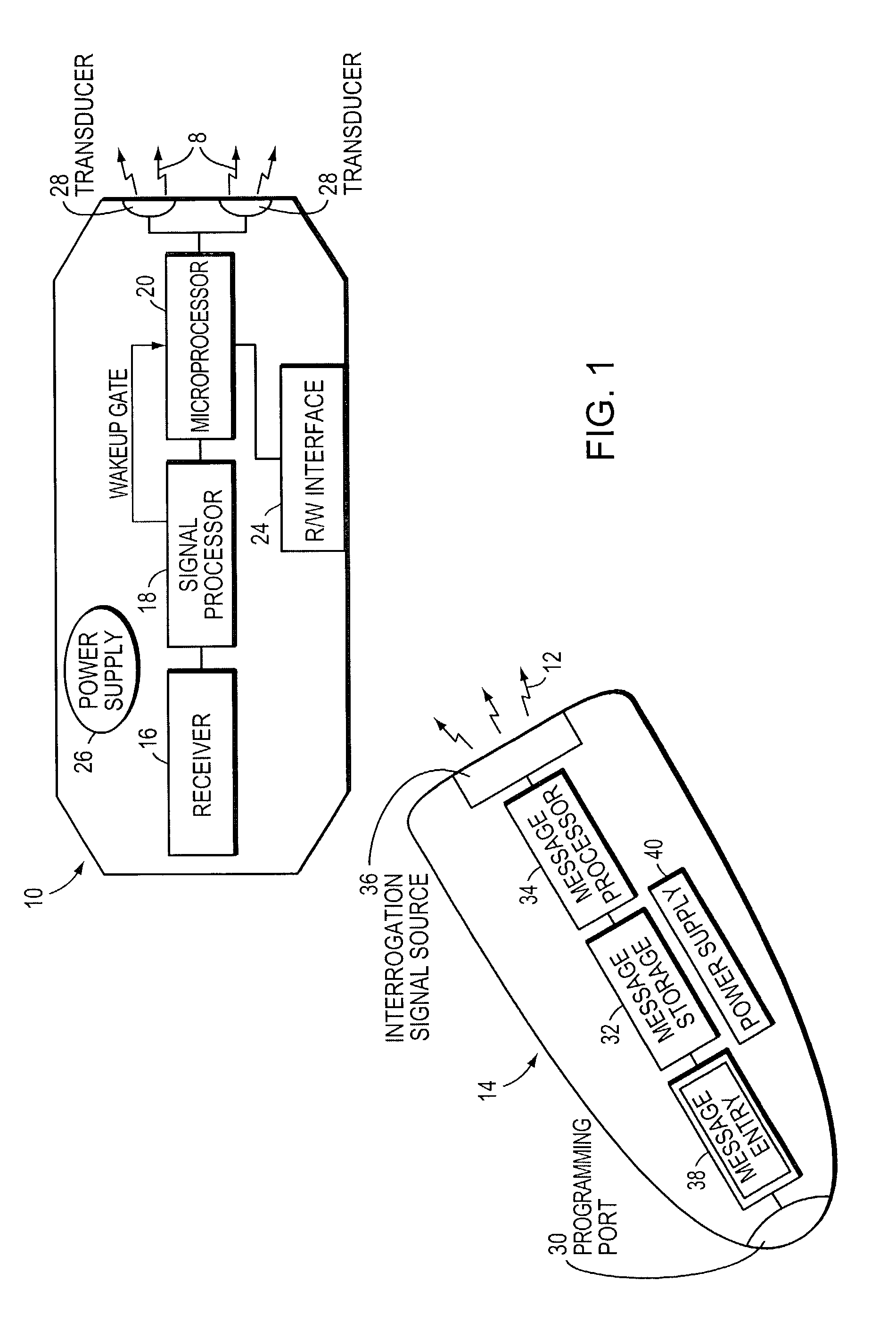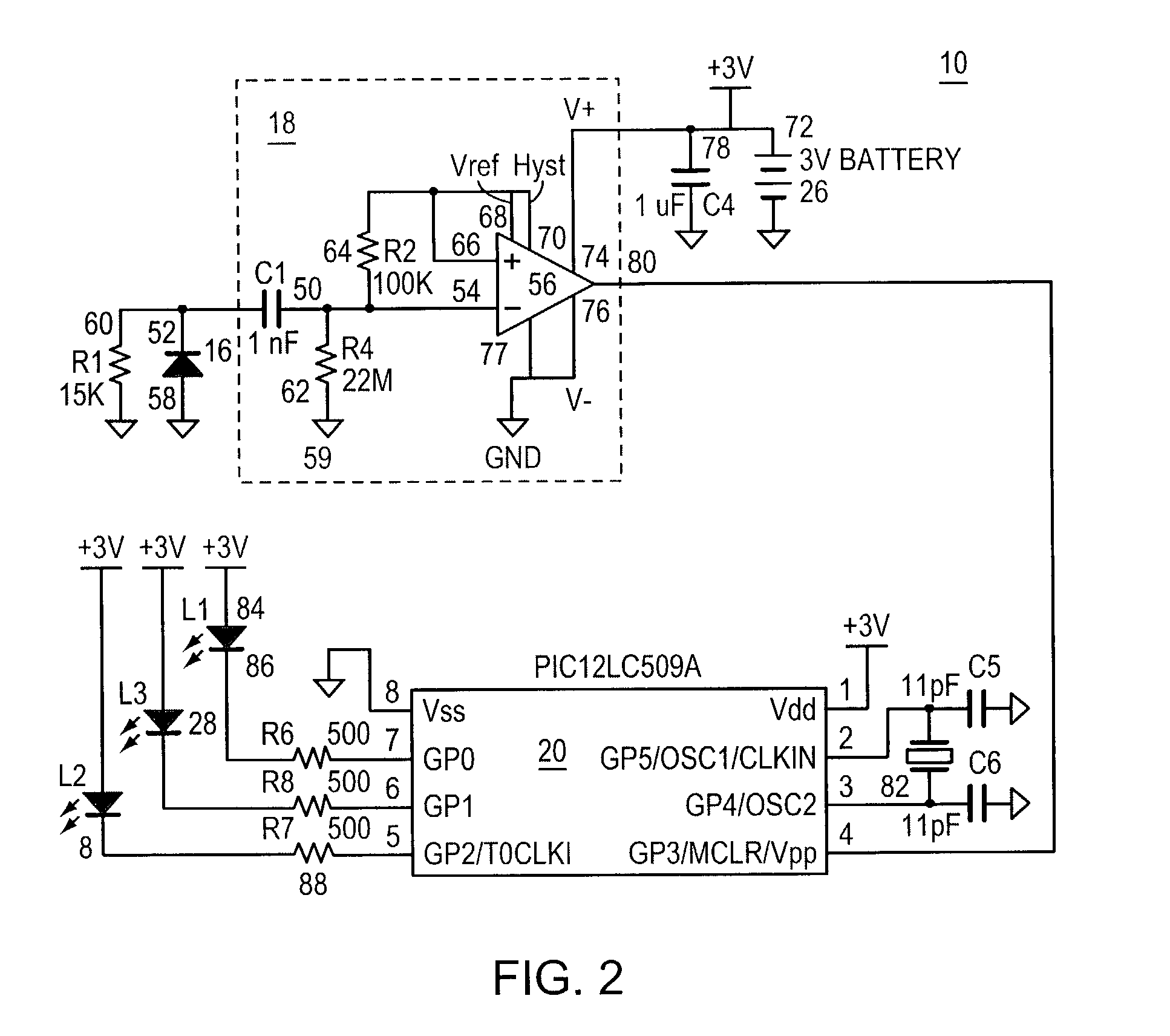Tag interrogation with observable response signal
- Summary
- Abstract
- Description
- Claims
- Application Information
AI Technical Summary
Benefits of technology
Problems solved by technology
Method used
Image
Examples
Embodiment Construction
[0015]FIG. 1 provides a general overview of an object-locating system whereby a single item can be quickly and precisely located from among a plurality of similar items. A searcher can locate the specific item sought by identifying the source of an observable signal 8 emitted by an identification tag 10. In one embodiment, the identification tag 10 emits the observable signal 8 when it receives a unique interrogation signal 12. As is described herein, the search protocol provided by the system allows an area to be rapidly scanned without the need to individually inspect each item.
[0016]Each identification tag 10 is associated with a unique object. In one embodiment, the identification tag 10 is affixed to or otherwise associated with the object. In another embodiment, the tag 10 is affixed to or otherwise associated with an item in close proximity to the object (e.g., a cartridge, a storage container, a physical location, an article of clothing, etc.). The system also includes a tra...
PUM
 Login to View More
Login to View More Abstract
Description
Claims
Application Information
 Login to View More
Login to View More - R&D
- Intellectual Property
- Life Sciences
- Materials
- Tech Scout
- Unparalleled Data Quality
- Higher Quality Content
- 60% Fewer Hallucinations
Browse by: Latest US Patents, China's latest patents, Technical Efficacy Thesaurus, Application Domain, Technology Topic, Popular Technical Reports.
© 2025 PatSnap. All rights reserved.Legal|Privacy policy|Modern Slavery Act Transparency Statement|Sitemap|About US| Contact US: help@patsnap.com



